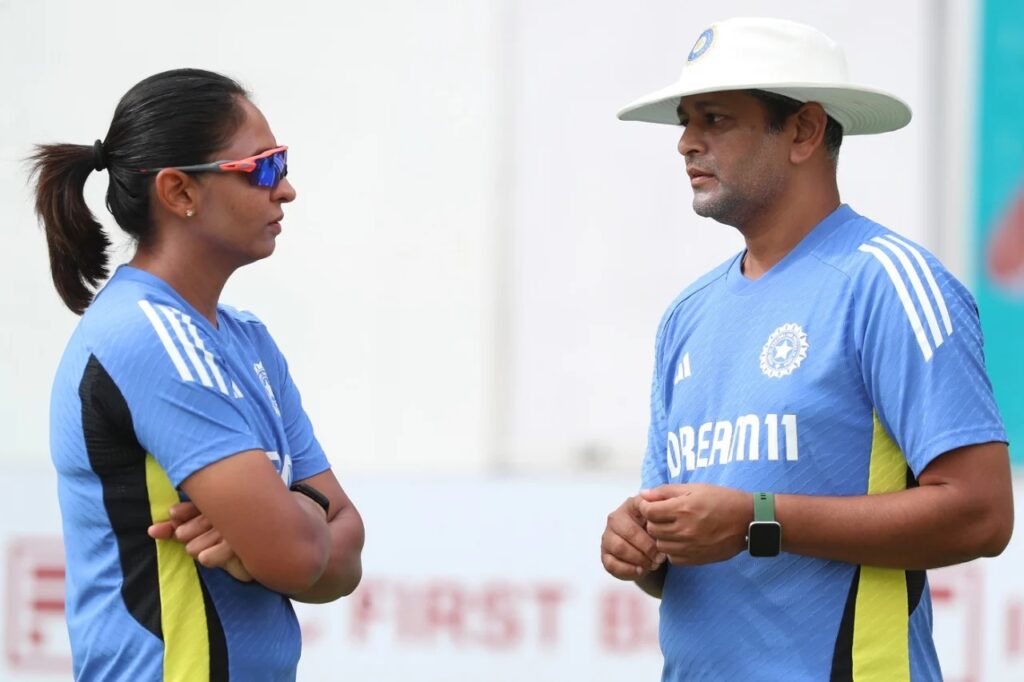
The Indian women’s cricket team has been a force to reckon with in recent years, consistently inching closer to global titles and earning the respect they deserve. But under coach Amol Muzumdar, the team seems to be moving backwards, not forward. Since he took charge, the Indian camp has been defined by inconsistency, questionable decision-making and a visible lack of direction. With a World Cup looming just 8-10 months away, Muzumdar’s tenure raises more questions than it answers.
The statistics paint an incomplete picture of the chaos. While India’s Test record under Muzumdar (three wins) offers a glimmer of hope, the T20Is and ODIs expose the cracks. In 20 T20I matches, India have won 14 but faltered against stronger opponents, while in ODIs, the team has lost six of 11 games, often in alarming fashion. On paper, the results might seem mixed, but the alarming trend lies elsewhere — India have not played the same XI in consecutive games even once.
This constant “tampering”, as players privately whisper, has bred insecurity. Young talents, expected to grow into their roles, are being yanked out of the XI without rhyme or reason. Take Titas Sadhu, for instance. The 19-year-old pacer, who impressed against Australia at home, was inexplicably dropped for the Bangladesh series. Then, in the ongoing Australia series, she played the first match only to be benched again for the second. What exactly is Muzumdar’s formula here? Is there one at all?
For any player to perform at their peak, they need stability and confidence — a message the current leadership seems to have missed entirely. Insecure players play safe cricket. Self-preservation becomes the priority. Intent vanishes. Risk-taking dies. This isn’t speculation; this is human psychology.
Muzumdar, however, has shown a worrying tendency to hide behind excuses instead of addressing these issues head-on. After India’s ODI loss to Australia, he said: “Most players were coming off domestic T20 tournaments or WBBL, so we couldn’t get much time together as a squad.” But isn’t it the coach’s job to ensure cohesion despite external circumstances? Isn’t accountability part of the role?
The concerns were evident during India’s disappointing T20 World Cup campaign, where Muzumdar’s post-match remarks felt out of touch. “We were in the game till the last over… Just that experience of Australia saw them through,” he had said. But how long will India hide behind the excuse of “experience”? How can experience grow when players aren’t given the security to play freely and learn from failures?
What’s most frustrating is the apparent lack of planning. Muzumdar proudly referenced India’s two preparatory camps — one for fitness and fielding, the other for skill work. But preparation without vision is meaningless. A coach needs to stitch all the parts together, anticipate challenges and inspire belief. India’s inability to close out games, field with energy, or chase targets with confidence proves that something isn’t clicking.
This is not a witch-hunt, nor a dismissal of Muzumdar’s credentials. Coaching an international team, especially in a cricket-mad nation like India, is not an easy task. But leadership isn’t about endless experimentation. It’s about identifying strengths, backing players and creating an environment where the team feels fearless, not fearful.
The current state of affairs does not just threaten the upcoming World Cup; it threatens years of hard-earned progress for Indian women’s cricket. India possess the firepower to conquer the cricketing world. But without vision, stability and accountability from the coaching staff, that fire risks burning out.
The World Cup clock is ticking. Muzumdar must ask himself: What kind of legacy does he want to leave? One defined by excuses, chaos and decline, or one that reignites belief and builds a team that can go the distance? Indian women’s cricket deserves better.
For more sports content follow: RevSportz




